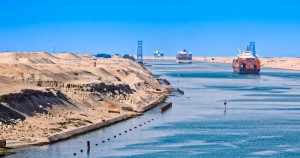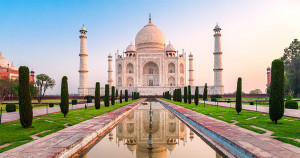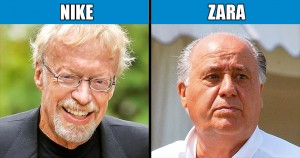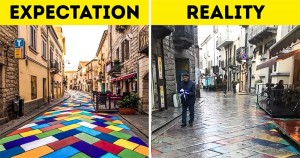7 Fascinating Facts About the Panama Canal
The idea for a canal across Panama dates back to the 16th century.
The men behind the Suez Canal and Eiffel Tower were convicted in connection with failed effort to build a canal.
In the ensuing centuries, various nations considered developing a Panamanian canal but a serious attempt wasn’t made until the 1880s. In 1881, a French company headed by Ferdinand de Lesseps, a former diplomat who developed Egypt’s Suez Canal, began digging a canal across Panama. The project was plagued by poor planning, engineering problems and tropical diseases that killed thousands of workers. De Lesseps intended to build the canal at sea level, without locks, like the Suez Canal, but the excavation process proved far more difficult than anticipated. Gustave Eiffel, who designed the famous tower in Paris that bears his name, was then hired to create locks for the canal; however, the De Lesseps-led company went bankrupt in 1889. At the time, the French had sunk more than $260 million into the canal venture and excavated more than 70 million cubic yards of earth.
The canal venture’s collapse caused a major scandal in France. De Lesseps and his son Charles, along with Eiffel and several other company executives, were indicted on fraud and mismanagement charges. In 1893, the men were found guilty, sentenced to prison and fined, although the sentences were overturned. After the scandal, Eiffel retired from business and devoted himself to scientific research; Ferdinand de Lesseps died in 1894. That same year, a new French company was formed to take over the assets of the bankrupt business and continue the canal; however, this second firm soon abandoned the endeavor as well.
America originally wanted to build a canal in Nicaragua, not Panama.
Throughout the 1800s, the United States, which wanted a canal linking the Atlantic and Pacific for economic and military reasons, considered Nicaragua a more feasible location than Panama. However, that view shifted thanks in part to the efforts of Philippe-Jean Bunau-Varilla, a French engineer who had been involved in both of France’s canal projects. In the late 1890s Bunau-Varilla began lobbying American lawmakers to buy the French canal assets in Panama, and eventually convinced a number of them that Nicaragua had dangerous volcanoes, making Panama the safer choice.
In 1902, Congress authorized the purchase of the French assets. However, the following year, when Colombia, which Panama was then a part of, refused to ratify an agreement allowing the United States to build a canal, the Panamanians, with encouragement from Bunau-Varilla and tacit approval from President Theodore Roosevelt, revolted against Colombia and declared Panama’s independence. Soon afterward, U.S. Secretary of State John Hay, and Bunau-Varilla, acting as a representative of Panama’s provisional government, negotiated the Hay-Bunau-Varilla Treaty, which gave America the right to a zone of more than 500 square miles in which it could construct a canal; the Canal Zone was to be controlled in perpetuity by the Americans. All told, the United States would shell out some $375 million to build the canal, which included a $10 million payment to Panama as a condition of the 1903 treaty, and $40 million to buy the French assets.
More than 25,000 workers died during the canal’s construction.
The canal builders had to contend with a variety of obstacles, including challenging terrain, hot, humid weather, heavy rainfall and rampant tropical diseases. The earlier French attempts had led to the deaths of more than 20,000 workers and America’s efforts fared little better; between 1904 and 1913 some 5,600 workers died due to disease or accidents.
Many of these earlier deaths had been caused by yellow fever and malaria; diseases that the medical community at the time believed were caused by bad air and dirty conditions. By the early 20th century, however, medical experts better understood the role of mosquitoes as carriers for these diseases, allowing them to significantly reduce the number of deaths among canal workers, thanks to a host of sanitation measures that included draining areas with standing water, removing possible insect breeding grounds and installing window screens in buildings.
Between 13,000 and 14,000 ships use the canal every year.
American ships use the canal the most, followed by those from China, Chile, Japan, Colombia and South Korea. Every vessel that transits the canal must pay a toll based on its size and cargo volume. Tolls for the largest ships can run about $450,000. The smallest toll ever paid was 36 cents, plunked down in 1928 by American adventurer Richard Halliburton, who swam the canal. Today, some $1.8 billion in tolls are collected annually.
On average, it takes a ship 8 to 10 hours to pass through the canal. While moving through it, a system of locks raises each ship 85 feet above sea level. Ship captains aren’t allowed to transit the canal on their own; instead, a specially trained canal pilot takes navigational control of each vessel to guide it through the waterway. In 2010, the 1 millionth vessel crossed the canal since it first opened in 1914.



















What do you think? Did you find it interesting? Share with your friends!